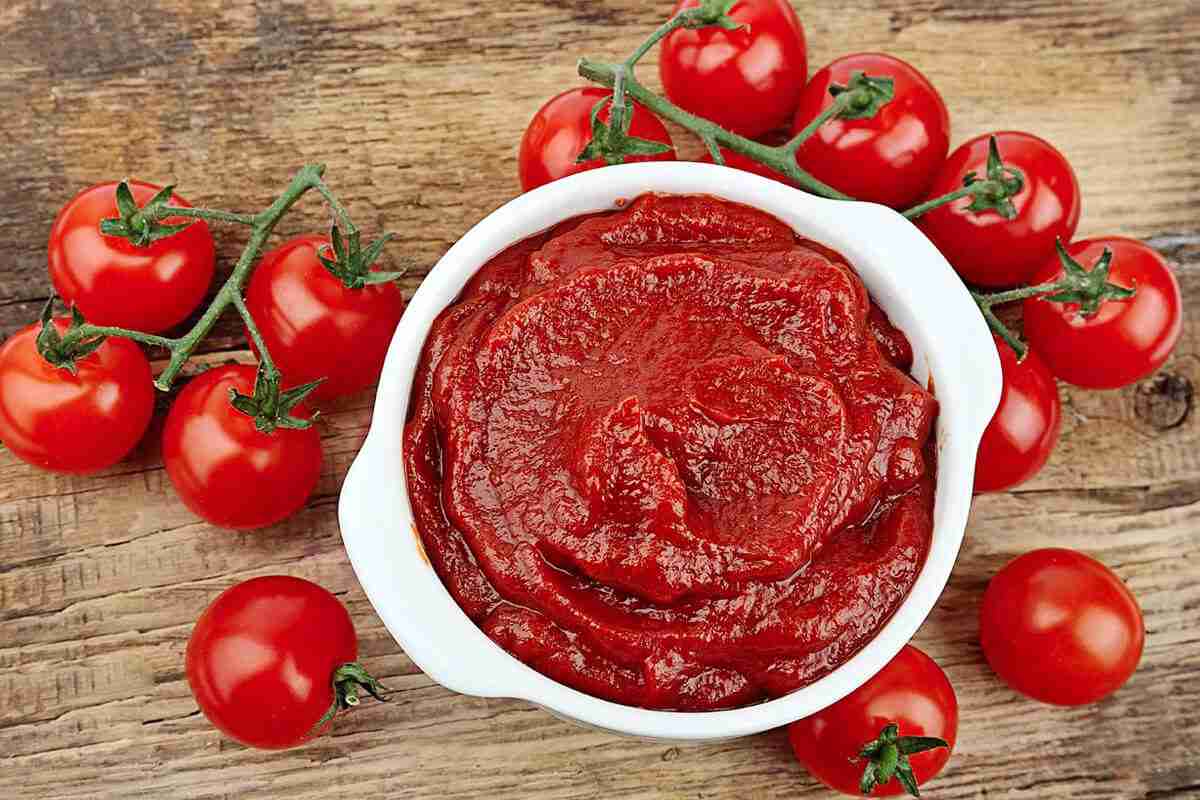In this post, we will learn the meaning of 28-30 tomato paste in plain English. What exactly does it mean when people refer to Brix? The amount of solids that have been dissolved in a liquid can be measured using the Brix scale.
In some posts, this term is also known as Total Soluble Solids (TSS). The Brix level can be increased by increasing the amount of carbon that is present in the soil.
Large quantities of sugars are produced by plants and secreted into the ground through their roots in order to provide food for the bacteria that live in the soil. By consuming these sugars, the bacteria in the soil are able to access nutrients that were previously inaccessible.

Taste tests are another arena in which well-known cherry tomatoes like “Sungold,” which are known for their high Brix (sugar) ratings, usually perform exceptionally well.
One of the varieties known as “Sungold” is among those that have been honored with Awards of Garden Merit by the Royal Horticultural Society. The Rosada, which is shaped like a plum, has Brix ratings that are much higher.
Hot Break for Tomato Paste at 28/30 degrees Patagoniafresh Brix is prepared in a manner that is in accordance with GMP and HACCP regulations.
The Brix rating, which measures the quantity of sugar in products such as wine, honey, and juice, as well as tomatoes, can be used to evaluate how sweet tomato is. Other examples of items that the Brix rating is used for include wine and juice.
In a given liquid solution, the amount of sugar that has been dissolved is represented by the Brix value.
This quantity is expressed as a number of Brix degrees. One degree of brix denotes that there is one gram of sugar contained in a solution that is 100 grams in total mass.
As a consequence of this, the sweetness of the liquid solution increases as the Brix value rises.
Brix is a unit of measurement that is utilized in the wine, sugar, fruit, and honey sectors in order to determine the quantity of sugar (sucrose) or water-soluble content present (on a percent-by-weight basis).
Although this is not always the case, the complexity of the flavor will increase in direct proportion to the variety of tomatoes used. A scale is shown here.
I designed this in order to provide culinary standards for Brix readings. 4.0 – 5.0 This range appears to account for the vast majority of tomatoes that are sold in commercial settings.

Undifferentiated flavor The quality of the harvest is highly valued by all parties involved in the distribution of vegetables, including growers, purchasers, managers, handlers, processors, restaurant owners, and customers.
There are many metrics that are used to evaluate and characterize various aspects of quality, but soluble solids or °Brix may be among the few that are as well-known or significant as they are.
On the Brix chart, your calculated brix level will be placed in one of the following categories: terrible, moderate, good, or extraordinary. The Brix level refers to the amount of solids that make up a plant juice’s total content.
The majority of these solids are composed of various minerals as well as sugar. The amount of sugars that are found in fruits and vegetables can be measured using a refractometer using a system called Brix.
Cooking and reducing the pulp of crushed tomatoes results in the creation of a thick, red paste or concentration that is known as “tomato purée.”
It is commonly used in Mediterranean countries, where it is produced in large quantities, to impart a vibrant color and a robust tomato flavor to meals.
The liquid extracted from ripe tomatoes, also known as Lycopesicum SP, is first concentrated to produce tomato paste, which is then filtered to eliminate the tomato skins and any other solid components that may have been present in the final product.
During a “Hot Break,” a fresh tomato is heated to a temperature between 85 and 100 °C before being chopped. On the other hand, a fresh tomato that is chopped during a “Cold Break” is cooked to a temperature between 65 and 75 °C.
The two products are differentiated from one another by the apparent viscosity, which is expressed in Bostwick centimeters.
The Cold Break product has a viscosity ranging from 9 to 16 Bostwick centimeters and a viscosity that is less dense due to its lower viscosity.

With an average Bostwick viscosity range that falls anywhere between 3.5 and 6 millimeters, the Hot Break product has a higher viscosity and, as a result, a higher density.
Fresh tomatoes are unloaded from truckloads into a collection channel, also known as a flume.
A collection channel is a duct made of cement or stainless steel into which a continuous flow of water that is three to five times more than the volume of unloaded tomatoes is pumped.
For example, a throughput of 10 tons per hour requires at least 30 m3 of water per hour to be processed.
This water flow transports the tomatoes to the roller elevator, where they are processed further before being delivered to the sorting station.
The delivery trucks are parked next to the flume, and as the trailers carrying the tomatoes are tilted in its direction, a worker will use a specialized tube to feed a significant amount of water into the truck.
This will allow the tomatoes to flow out of the truck’s one-of-a-kind opening that measures 50 centimeters by 50 centimeters. In this approach, the water and tomatoes will be fed into the flume in a manner that is both gentle and damage-free.
The tomatoes first go through a cleaning process involving a spraying system that uses clean water, then they are delivered to the sorting facility (preferably drinking water).
In this area, workers sort out the tomatoes that do not meet quality standards by separating those that are either too small, too green, or broken.
They then place these tomatoes on a reject conveyor (or an auger), where they remain until either being placed in a large box or directly inside a truck to be removed.

Delivered to the chopping station, where they are processed with a hammer mill or a one-of-a-kind mono-pump that is outfitted with a pre-feeding screw, the tomatoes that are now ready to be processed await their turn.
The pulp is pre-heated to temperatures between 65 and 75 degrees Celsius for the Cold Break processing and between 85 and 95 degrees Celsius for the Hot Break processing.
The primary control panel of the evaporator is responsible for regulating the temperature of the pre-heating.









Your comment submitted.